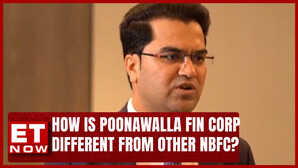The Sengol's Time Has Come
Ignore The Left’s Attempts At Ruining This Moment Edifying Bharat's Tryst With Its Dharmic Civilizational Heritage.

Updated May 25, 2023 | 12:31 PM IST

Ignore The Left’s Attempts At Ruining This Moment Edifying Bharat's Tryst With Its Dharmic Civilizational Heritage.
Photo : TIMES INTERNET NETWORK
Over the next few days, we will read a lot about the Sengol. This is because it has been salvaged from relative obscurity by the Modi government which will place it in the Lok Sabha (people’s) chamber of the new Parliament.
The announcement about the Sengol’s long overdue rehabilitation was immediately met with predictable disapproval. Veritable congeries of the Indian left are linking the placement of the Sengol to what they call an ‘ongoing BJP project’ to advance a Hindu India. A sizeable section of their patrons in the Opposition have even announced a strategic boycott of the function being organized to inaugurate the new Parliament complex. The NDA’s showcasing of the Sengol has only given the Opposition an additional unsubstantiated pretext to justify its boycott.
The Centre of course is unmoved. The ‘sacred scepter’, it says, is the physical manifestation of a “tribute” to Bharat’s civilizational heritage in this time of “Amrit Kal”.
The word Sengol traces its origins to the Tamil word ‘semaai’, which means enlightenment. Its symbolic significance has been immortalized in a ceremony from Chola times when the ‘Raj Guru’ of the Kingdom used to hand the Sengol to the newly crowned Chola king. It was a ritual intended to remind rulers that they must adhere with steadfast fidelity to the precepts of Hindu or Sanatana Dharma.
Given that mischievous Marxist historians and their political patrons deliberately conflate Dharma with religion it is no surprise that they have chosen to link the placement of the Sengol to the consecration of a “second Hindu republic”.
But in misrepresenting the historic imperatives behind placing the Sengol in the new Parliament, the Left is today conveniently glossing over another significant fact of modern history.
That it was the so-called ‘avowedly secular’ Nehru administration that first gave pride of place to the Sengol. In fact, the ‘lightning rod’ for India’s dharmic past has already reprised a stellar role on Indian democracy’s most exalted stage – Parliament. And for this, we must thank the towering Congressman and the last Governor General of India the late C. Gopalachari or ‘Rajaji’ as he was called fondly.
Indeed, an hour before India’s “tryst” with the epochal “midnight hour” in 1947, Jawaharlal Nehru received the ‘Sengol’ from the Adheenams (Priests) of the Thiruvaduthurai Adheenam (Mutt) in Tamil Nadu. The handover marked the precise moment when power was transferred by the British into the hands of independent Indians. The last British Viceroy Lord Mountbatten had asked the Indians how they would like to symbolically mark the transition of power. On being consulted Rajaji immediately drew a leaf out of the book of ceremonial rituals that guided the ancient Chola coronation ceremony.
The Sengol that was handed over to Nehru was in fact made by the Mutt in 1947. The priests were called upon by Rajaji to design a replica of the staff used during the Chola coronation ceremonies. Once made it was delivered by a special flight to mark the transfer of power in 1947. The Sengol handover ceremony ensured that the ‘transfer of power’ was immersed in rich Indic symbolism.
But despite the historic role it played in arguably the most significant chapter of India’s modern history, the Sengol, which is incidentally also caparisoned with a statuette of Nandi depicting Nyaya, was in a manner of speaking, scrubbed out of the national imagination.
Yes, it was preserved, but in a reliquary of sorts. For 75 years, prior to now, it has gathered dust in an unloved museum in Uttar Pradesh.
The Sengol’s virtual exile from the mainstream was very much in line with the elaborate steps that were taken, in the decades after independence, by the Leftist custodians of India’s history to purge India of its Hindu civilisational past. All this is supposedly in the name of advancing secularism.
At one point the impetus from so-called ‘secularists’ was so strong that Nehru was pressured into even discouraging India’s first President Rajendra Prasad from consecrating the Somnath temple (a symbol of the desecration of Hindu civilization’s most sacred creations by Muslim invaders) in Gujarat.
The Leftist establishment was convinced that any dalliance with Hindu iconography would be viewed by other faiths as a tacit acknowledgement of the primacy of the Hindu faith in independent India. Of course, that did not prevent the left from pushing the state to selectively champion the interests of minorities at the cost of the majority.
Some historians even elevated this wholly discriminatory approach to secularism to the level of a fetish when they began to deny the existence of Hinduism itself. Shockingly, far from being challenged, some of these historians went on to enjoy state patronage while their Indic interrogators were often disparaged as Hindutva sympathisers and cancelled.
The Modi government’s decision to offer pride of place to a Hindu cultural marker in the shape of a Sengol is a timely step towards inserting Bharat’s civilizational past back into the beating heart of the nation’s politico-cultural life.
End of Article
Videos





02:08
What Are Key Differentiating Points In Poonawalla Fin Corp ? | Explains MD Abhay Bhutada

03:23
Breaking News | BJP MP Accuses Leaders Of 'Adjustment' With Congress In Karnataka, Sparks Infighting

03:38
Manipur Violence Erupts Again As Kukis, Meiteis Refuse Peace Talks| 9 Killed In Flare-Up

03:03
How MD of Poonawalla Fincorp Abhay Bhutada Started His Career ? | Business News

03:56
TMC Workers Clash In West Bengal Ahead Of Upcoming Panchayat Polls | Election News













